This week, as I watched “Flashdance” & “Undine”, I paid attention to things “outside the frame”, like music and sound. I looked for examples of diegetic and non-diegetic music and sound. In The Last Detail, it’s explained that “Diegesis refers to the interior world of the film; if any sound is diegetic, that means the characters in the story hear it. A passing subway train, a honking car horn, dialogue exchanged between characters—all of these are elements of diegetic sound”. It further describes, “Non-diegetic music, by contrast, does not appear within the world of the film. It exists in the strange space beyond the frame, where the filmmaker provides a kind of musical comment on the action without the characters’ knowledge. Non-diegetic music is there for the benefit of the audience, shaping our perceptions of what we see through a play to our emotions. It’s almost like an act of narration—the characters don’t hear the music, but we certainly do”.
Flashdance
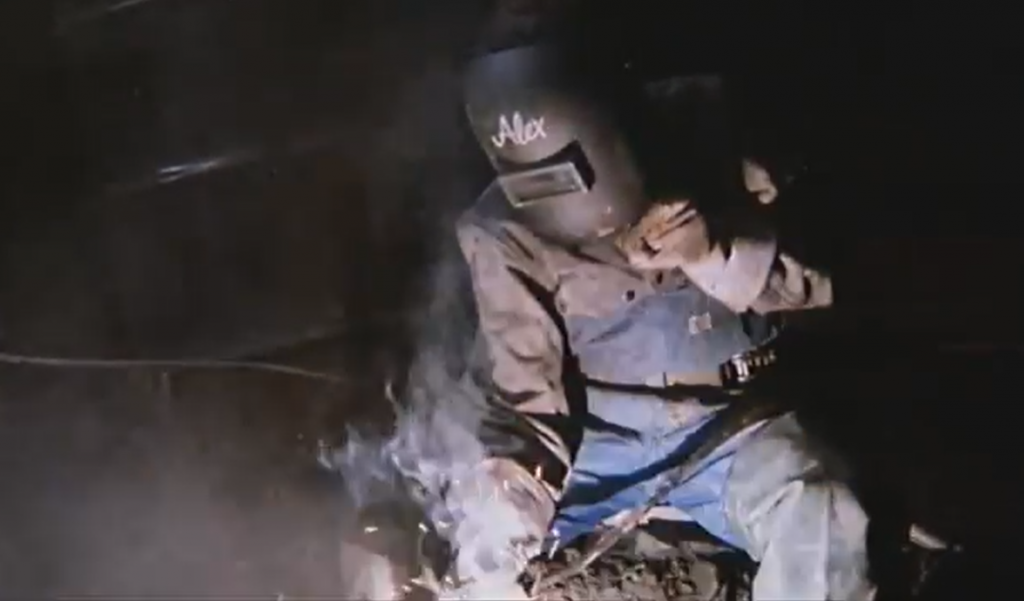
“Flashdance” is a Romance/Dance film directed by Adrian Lyne in 1983. In the opening, the movie starts with music in the background and the sounds of people working. In The Last Detail, it says, “Filmmakers have two kinds of sound at their disposal when constructing their work. The first is diegetic sound, which refers to any sound or music that the characters can hear, motivated by the world they inhabit”. The sounds of construction equipment and machines is a good example of diegetic sound because it shows that those sounds are a part of Alex’s world. Those are sounds she’s well aware of.
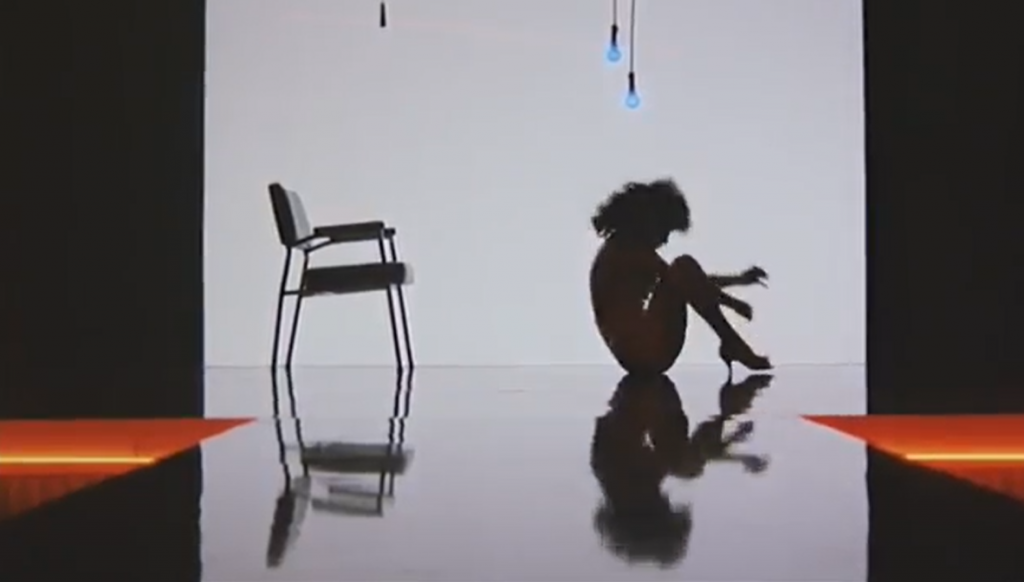
Another example of diegetic sound is when a character is dancing on stage and there’s music playing. The characters also hear the music playing because the actress dancing on stage is dancing to the music you can hear.
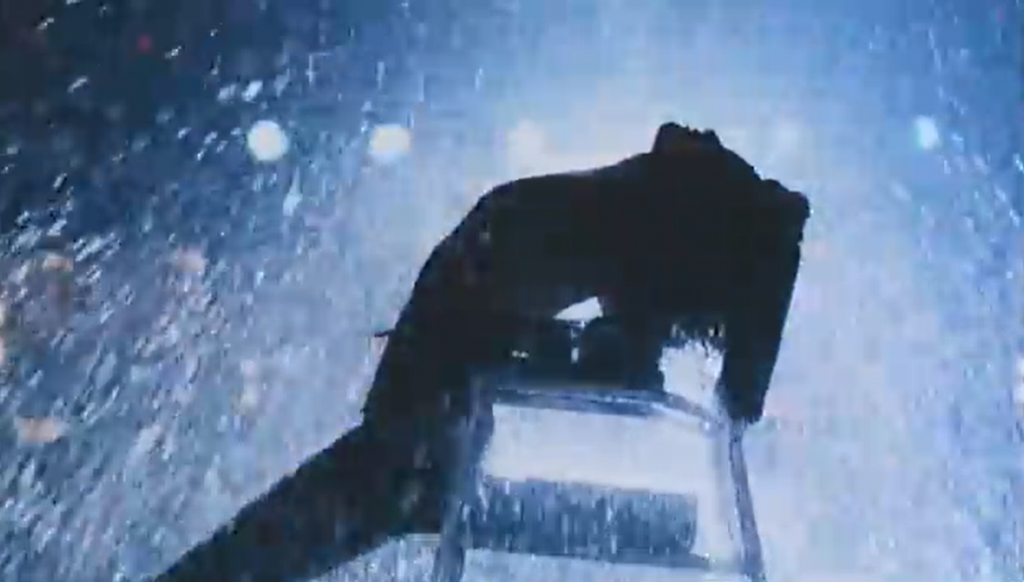
Similarly, when she pulls on the lever and water drops, the audience and actors hear it.

In this scene, Alex dances alone in her room. It feels like “montage music” because we’re watching her dance or warm up.
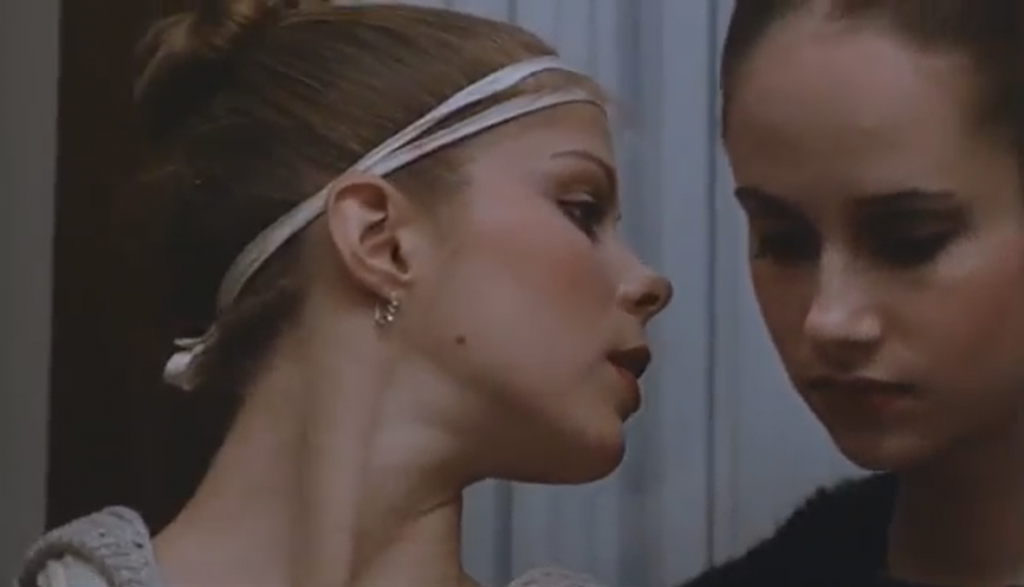
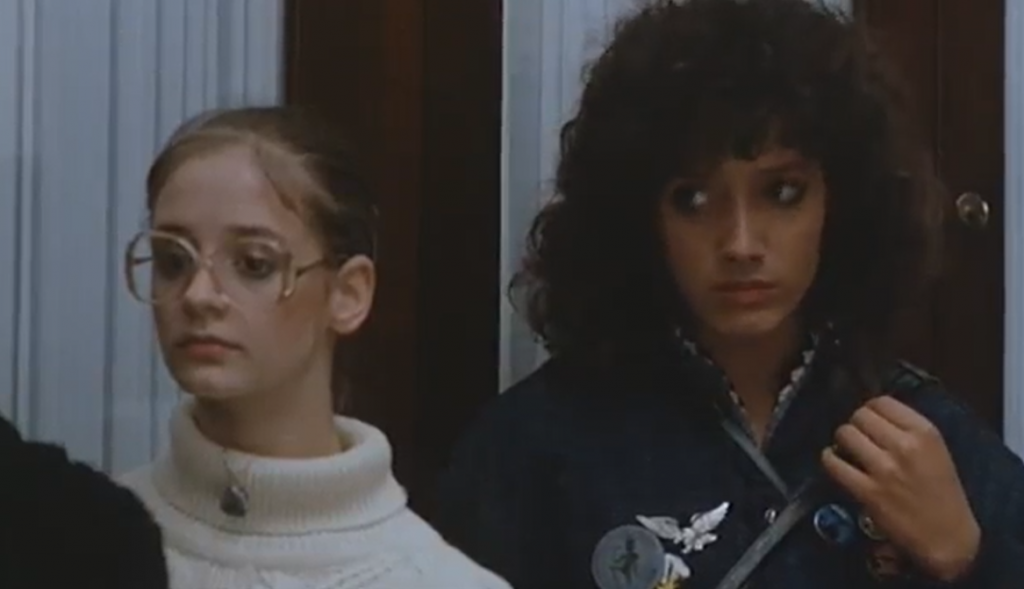
Eerie music plays in the background while they whisper, creating a suspenseful atmosphere. And then, in the following clip, the sound of a clock ticking can be heard in the background to enhance the feeling of suspense. You can tell Alex is uncomfortable in this scene. The ticking is a great example of non-diegetic sound. In The Last Detail, it’s explained that this is what “the characters cannot hear, but we can. While most non-diegetic sound is musical in nature, filmmakers will also occasionally use sound effects non-diegetically”.

In this screenshot, no music is heard, just the screeching of the elevator, which emphasizes the awkwardness that the characters are feeling in this scene.
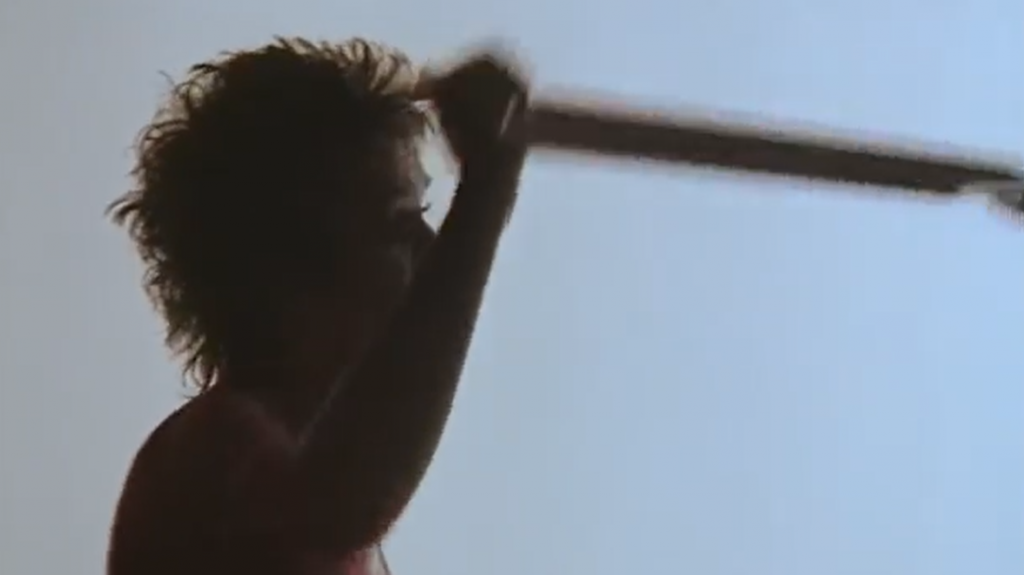
The girls are all working out at the gym, and the music that is used feels like “montage music” again. There’s a good minute of them doing their workouts, while the music just plays as they’re making weird faces.
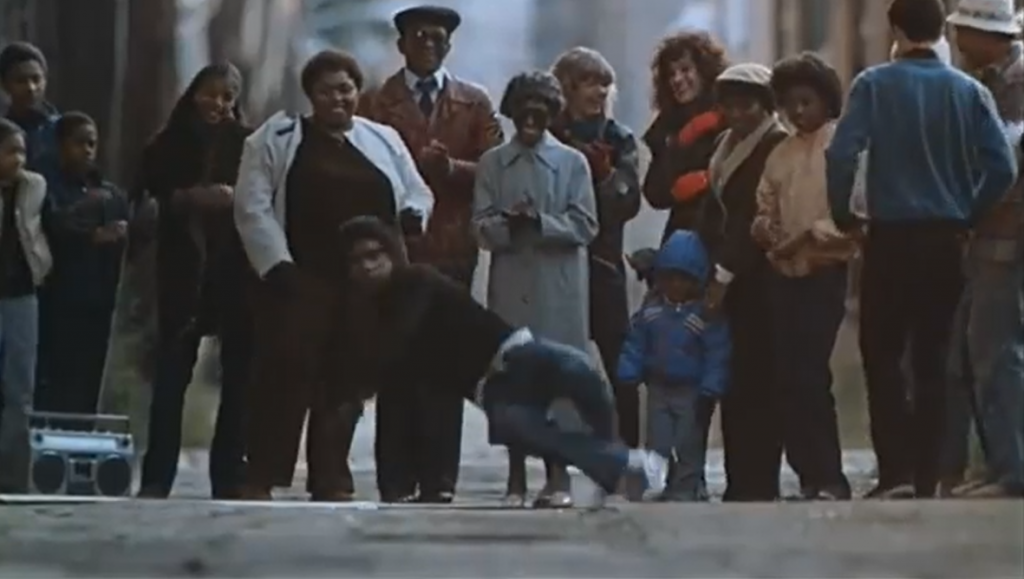
While the street dancers are performing, the crowd is clapping, but you can’t hear the clapping. I feel like this is a good example of diegetic sound, except the audience can’t hear it.

The music that can be heard during her performance, the crowd in the scene can also hear it because it’s part of the show.
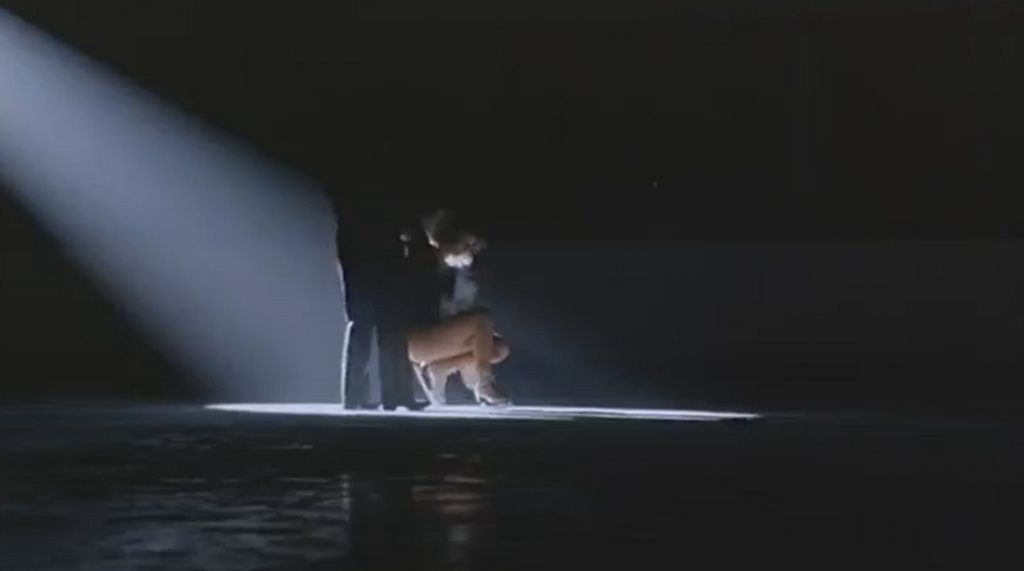
I’m assuming this is her coach, but the music fades out to indicate that it’s the end of her performance as well as the scene, but it also felt like embarrassment and shame. To me, the fading music resembled the way you shrink in embarrassment when you make a mistake.
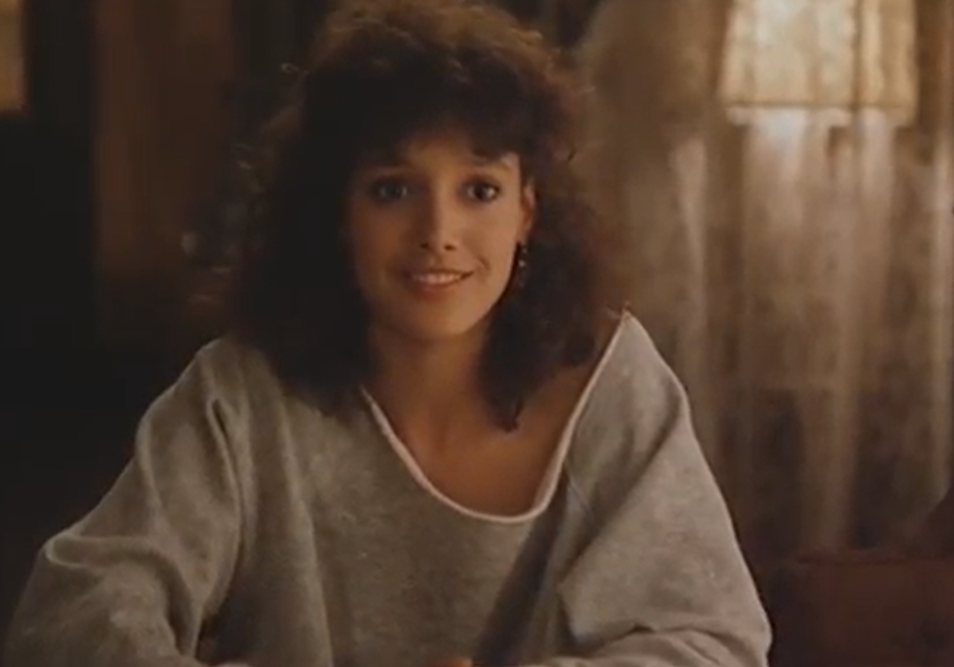
Alex is saying something inspiring here, but there’s no music to emphasize what she’s saying or how she’s feeling, and it feels a little lackluster. I’ve noticed that Lyne only uses music during “performative scenes” when the actors are dancing, and rarely uses it in the background at other times.
Ok, maybe I was wrong because in the next scene, right when it gets romantic, a quiet soothing tune plays in the background that the characters aren’t hearing.
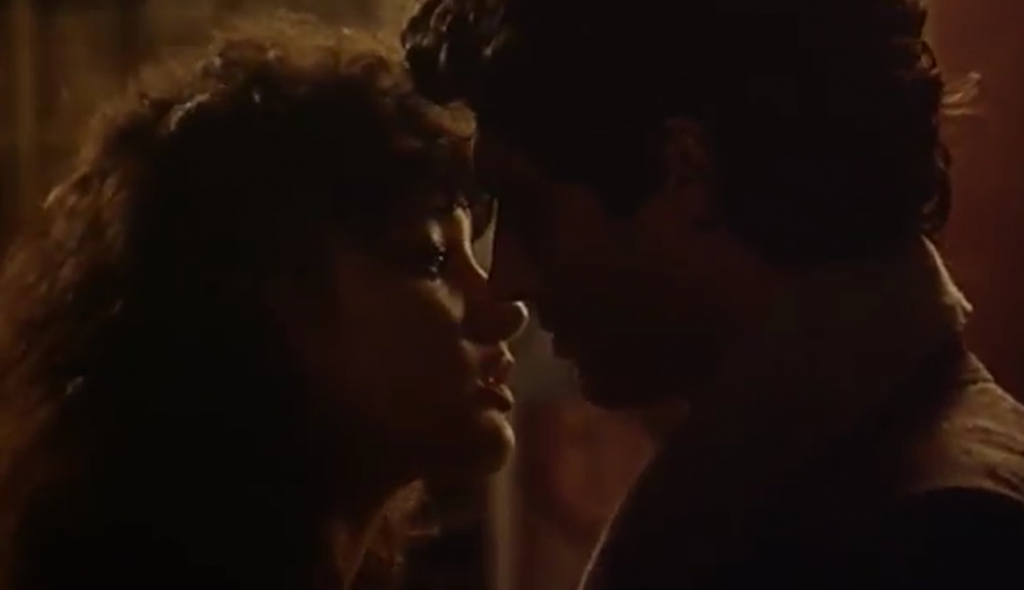
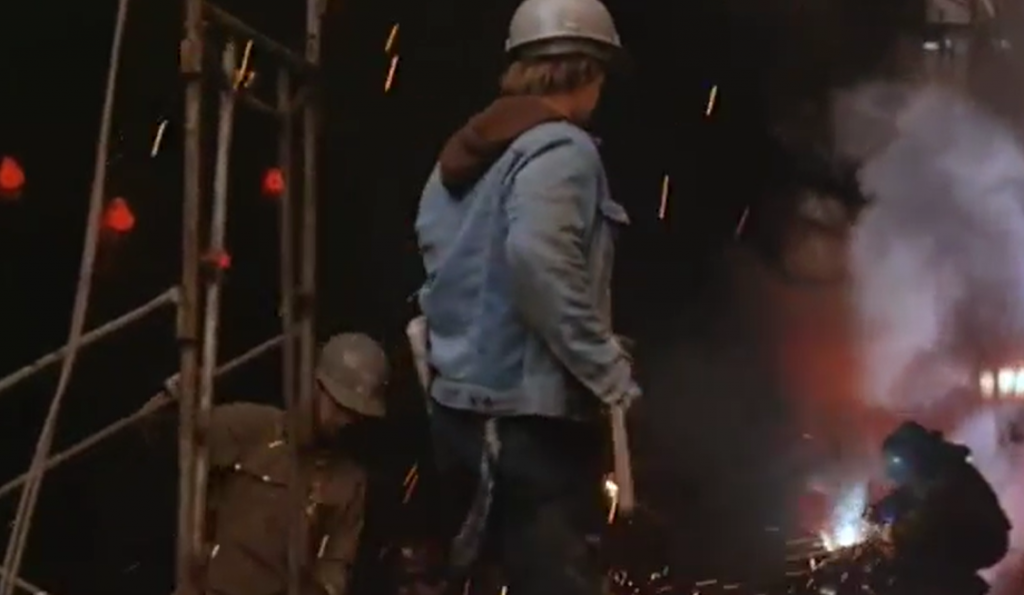
This scene felt like a jumpscare because you hear the sawing again. It’s very harsh and loud to emphasize that this kind of setting in real life is loud and harsh.

You know how you’ll be watching a movie on Netflix, and when music starts playing, the description “[somber music]” comes up? This scene felt just like that. The music started as Richie and Alex hugged goodbye, and it lasted until Alex was staring out the window. I feel like Lyne does this to portray that the whole moment is saddening.
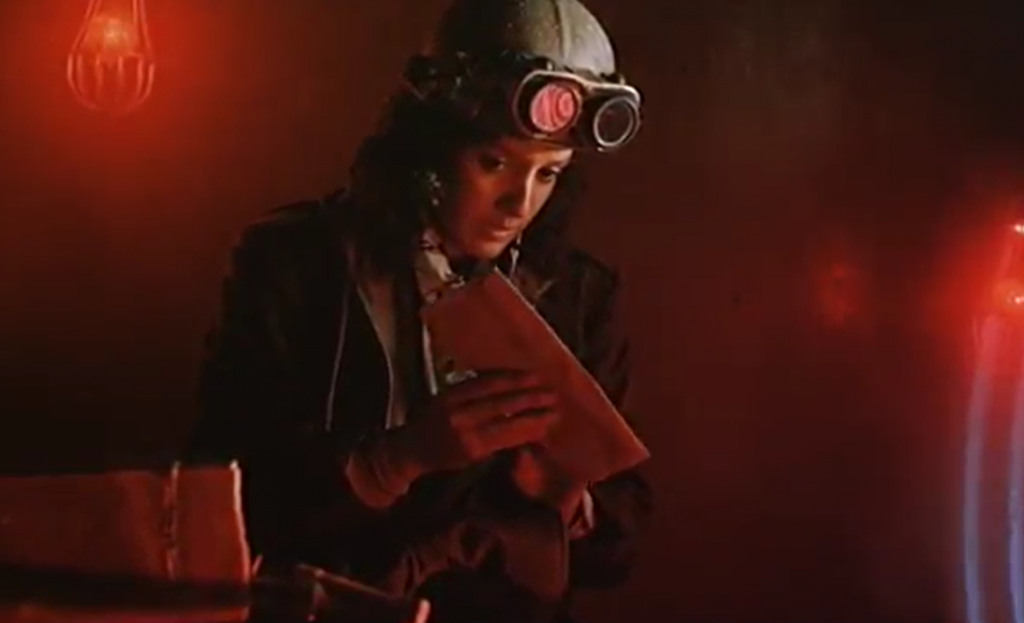

In this screenshot, I imagined “[suspense music]” showing up. Lyne does this to indicate that Alex is pensive and anxious about opening the envelope. Then, the music turned higher and upbeat to portray her lifted mood because she got an audition! The music matched her mood and excitement perfectly.
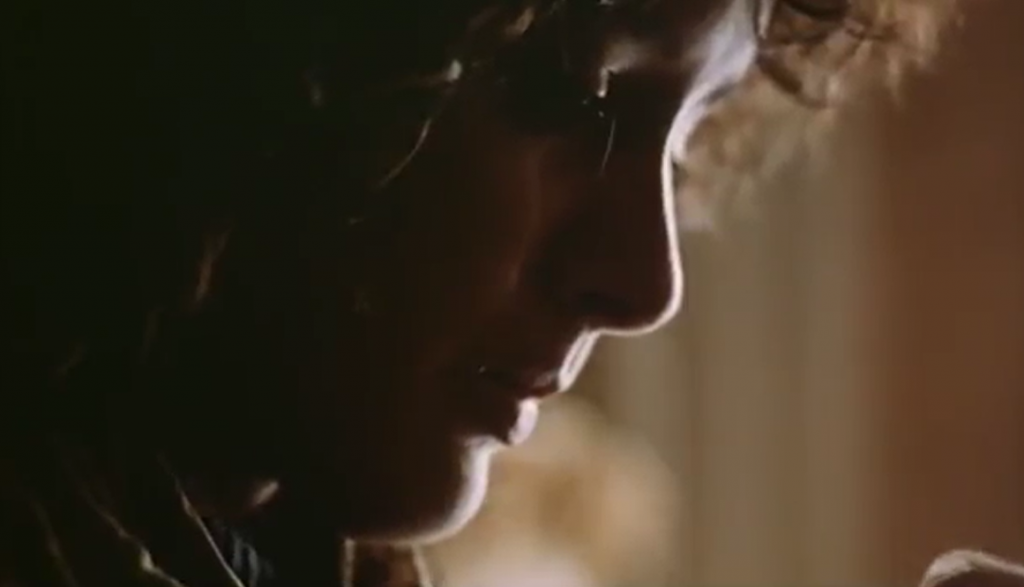
Alex goes to visit her grandma and discovers that she has died. The music here turns sad because she’s mourning her grandma. The camera also pans over all the images and photographs to show the audience that this scene is heartbreaking.
Undine
“Undine” is a Romance/Fantasy directed by Christian Petzold in 2020. This was also in German, and I realized that a lot of the language’s words are similar to English words: cognates. Although it’s listed as “Fantasy”, it didn’t feel like it. Truth be told, by the time there were ten minutes left, I felt like the movie hadn’t even started yet. This film felt like an hour-and-a-half-long prologue. With a Fantasy, whether it’s a book or a movie, there has to be a lot of exposition. Things need to be explained and established about the world. This is called world-building. I feel like there wasn’t much of that in this film. If there was, it wasn’t clear enough. Anyways, compared to “Flashdance”, which was packed with different types of music, this film had very few music sequences.
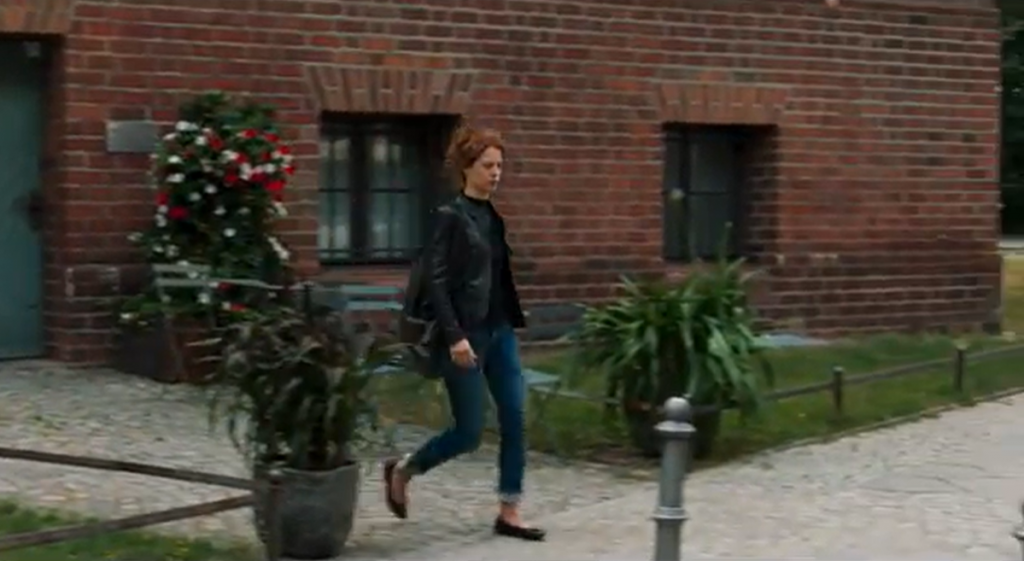
In this scene, I noticed that the steps didn’t match up with the actress walking. The steps sounded like they were heels, but she’s wearing flats. I’m guessing this sound was added, so this would be a good example of non-diegetic sound.

I feel like Petzold could’ve put some music here while he’s performing CPR to accentuate the moment. This scene felt odd because Christoph simply blew into her mouth, and she woke up. She didn’t even choke up any water, which felt strange. The lack of any sounds or music added to the oddness of the scene.
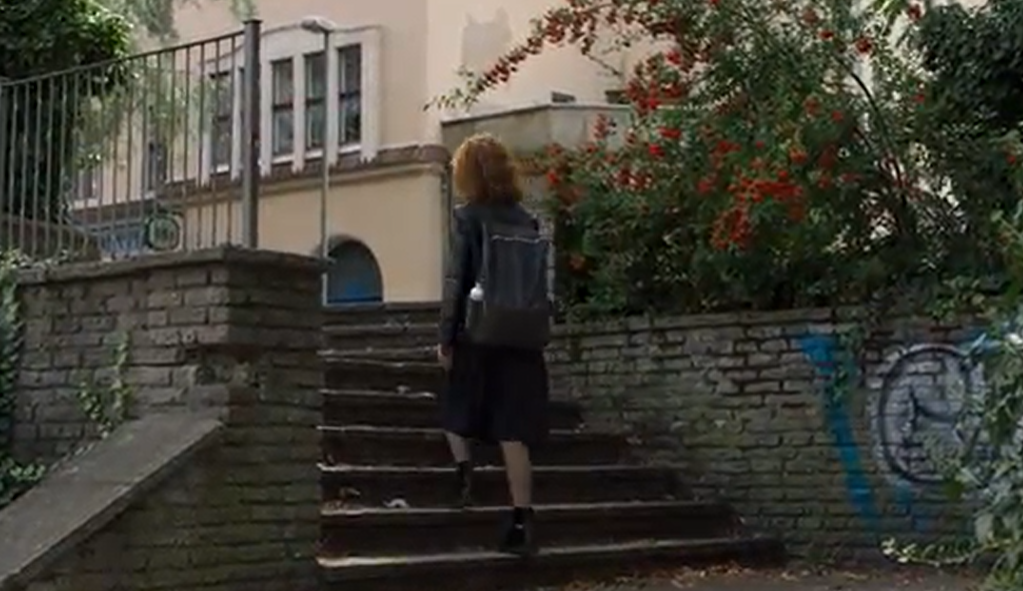
As I described above, I noticed the same thing in this scene of Undine walking. It’s the sound of heels clicking again, but she’s wearing boots.
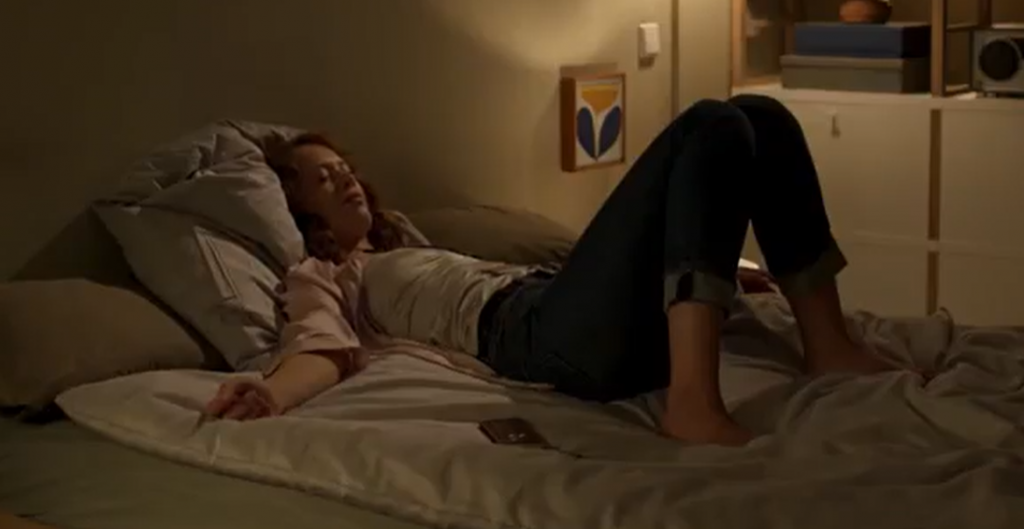
Undine is lying in bed, and “Staying Alive” starts playing. Petzold does this to show that that’s what she’s listening to on her earbuds. Lots of films do this, not only live action. Animated movies do this too, and the only one I can think of right at the top of my head is “Ladybug & Cat Noir: The Movie” when Adrien is lying on his bed. His earbuds are in, and “Careless Whisper” starts playing, haha.

I noticed that every time she’s on the train, the director plays piano music in the background.
Well, there you go. This week, I watched two films that were nowhere close to one another. Although both were “Romance”, one was Dance, while the other was Fantasy. “Flashdance” had portrayals of music and sounds almost every thirty seconds, but “Undine” had like five. Similar to last week’s movies, this week’s movies have a striking time gap between when they were released. “Flashdance” was released in 1983, and “Undine” was released in 2020. In forty years, a lot of things have changed, and so the filming standards have likely also been altered. You also have to take into account that one of the films is in a completely different language. Christian Petzold is a German film director and screenwriter, so his viewpoints might be completely different from Adrian Lyne’s. Maybe he was aiming to express more of the plot rather than the representation of music and sounds. Between the two, I think I enjoyed “Undine” more, despite feeling like I was about to be jumpscared every time Undine was in the water.

Leave a Reply